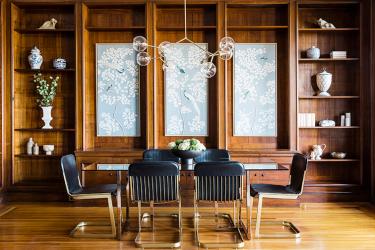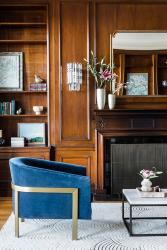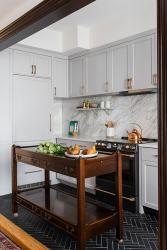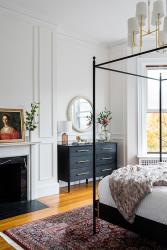Titans of Industry: The industrial revolution heavily influenced the Art Deco design era after large quantities of sleek metal became more available. Incorporate metal work into your space in both furniture and accessories, adding a sleek and shiny finish to your decor.
Geometry Class: Cubism and other contemporary artistic movements of the time became an integral part of Art Deco design elements. Now, Art Deco is often synonymous with any decor accent or art piece that is largely geometric. Symmetrical designs and exuberant shapes can add life to a design without making it appear disordered or cluttered.
Streamlined Shapes: When adding furniture to your Art Deco home, think about accentuating or complementing the shapes created by the surrounding accessories and artwork. Long, smooth, sweeping curves in furniture can soften a space’s otherwise straight-edged forms.
(Sun)bursting with Style: Sunburst and sunrise motifs signified the rising of a new, more enlightened era of early twentieth century prosperity. Their obviously geometric forms will blend seamlessly into any Art Deco design while also embracing the zeitgeist of the 1920s and ‘30s.
Go Wild!: You don’t have to be a big game hunter to bring animal prints into your Art Deco home anymore; now you can opt for faux skins and stunning animal print fabrics! If animal prints aren’t to your taste, bringing the outside in with fabrics in leaf, branch or feather patterns can also achieve the desired effect.
Don’t Tone It Down: If Gatsby was anything, he was glamorous! Art Deco isn’t known for holding back when it comes to adding details. Go bold with shiny chrome accents and large light fixtures to really bring the drama.
The Richer, The Better: Leave the lighter, more understated woods for the Scandinavian designers! Art Deco design embraces the deep, rich tones of Violetwood, Amboyna burl, Macassar ebony and mahogany. These opulent woods became a status symbol of wealth. Nowadays, however, you can find beautiful reproductions of these pieces without breaking the bank.
Mirror, Mirror, on the Wall: Make sure to add plenty of mirrors! They not only make a statement in a room, but they also serve the purpose of adding additional light to the often darker tones of Art Deco interior design. If you’d really like to embrace mirror styles from the ‘30s and ‘40s, choose a mirror with beveled edges or crafted into an interesting shape.













